VY Canis Majoris is an enormous supergiant or hypergiant located in the constellation of Canis Major. It is more than 1.000 times bigger than our sun, and it is among the largest known stars in the Milky Way galaxy.
Key Facts & Summary
- VY Canis Majoris is a pulsating variable star situated at around 3.900 light-years / 1.2 kiloparsecs away from the Sun.
- It has an apparent magnitude that varies from 6.5 to - 9.6, and its absolute magnitude is – 9.4.
- VY Canis Majoris is surrounded by a complex asymmetric circumstellar envelope caused by mass loss from the star itself.
- VY Canis Majoris is one of the largest known stars by radius, luminosity, and mass in regards to typical red giants.
- VY Canis Majoris has been estimated to have around 17 solar masses, but its radius is a whopping 1.420 times greater than our sun’s.
- The hypergiant is also around 270.000 times brighter than our sun.
- VY Canis Majoris is, in fact, cooler than our sun, with estimated surface temperatures of around 3.490 K.
- One of the first recorded observations of VY Canis Majoris occurred in 1801.
- Most stars end their life in a supernova explosion, in the case of VY Canis Majoris, it will end its life in something around 100 times greater than a supernova, a hypernova.
- VY Canis Majoris has been estimated to have around 8.2 million years. It is much younger than our sun.
- VY Canis Majoris has a rotational velocity of around 300 km / 186.4 mi per second.
- If a hypothetical object would travel around the star’s circumference at the speed of light, it would complete its journey in around 6 hours – in comparison to the sun, it would take it around 14.5 seconds.
- VY Canis Majoris has an average density of 5.33 to 8.38 mg/m3, it is over 100.000 times less dense than Earth’s atmosphere at sea level.
VY Canis Majoris was first observed and recorded in 1801 by the French astronomer Jerome Laland. It was listed as a 7th magnitude star and further investigations conducted between the 19th and 20th centuries suggested that the star has been fading since 1850.
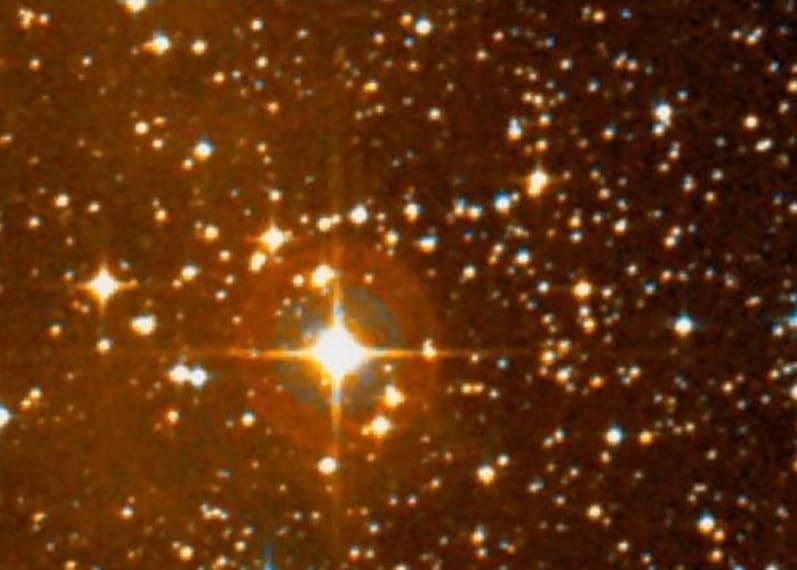
It was first described as a crimson star, while observations progressed it was discovered that VY Canis Majoris was a strong source of OH(1.612 MHz), H2O (22.235.08 MHz), and SIO (43.122 MHz) masers emissions, which is typical of an OH/IR star. Many molecules have been detected have also been detected.
In 1931, variations in VY Canis Majoris’s brightness were first described. It was listed as a long-period variable with a photographic magnitude range of 9.5 to 11.5. Thus, because of this, it was given the designation VY Canis Majoris in 1939, the 3rd variable star of the constellation of Canis Major.
Formation
VY Canis Majoris is embedded within the large molecular cloud called Sh2-310. This is one of the largest star-forming H II regions which has a diameter of around 480 arcminutes / 681 light-years / 209 parsecs. Molecular clouds of gas and dust are responsible for many star births. In the case of VY Canis Majoris, it was formed around 10 million years ago when gravity pulled swirling gas and dust together.
VY Canis Majoris is a very young star, and it is believed that it evolved from an O9 main-sequence star which initially had between 5 – 20 solar radii. The star evolved quickly due to its high mass and has spent its time in the red hypergiant phase for around 100.000 to 500.000 years, thus the star has left its main sequence more than a million years ago.
Distance, Size, and Mass
VY Canis Majoris is situated at around 3.900 light-years / 1.2 kiloparsecs away from the Sun. It is one of the biggest stars ever observed and detected in the Milky Way galaxy.
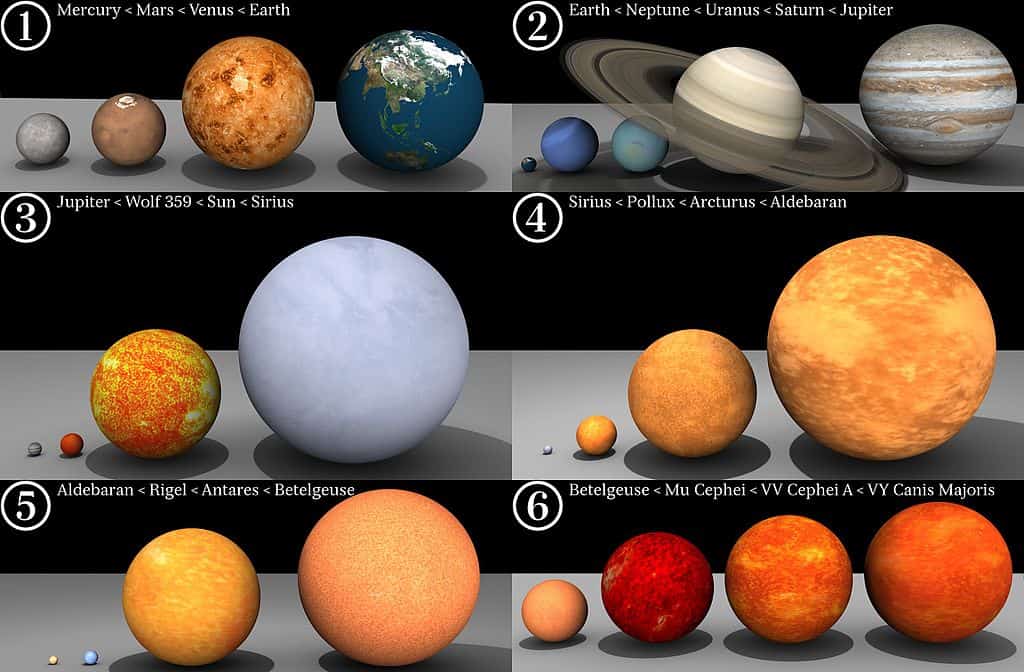
VY Canis Majoris has been estimated to have around 17 solar masses, and it is believed that it's lost more than half its mass. VY Canis Majori’s radius has been estimated to be around 1.420 times greater than the sun’s radius.
VY Canis Majoris’s diameter is around 1.750 times greater than the sun’s at approximately 1.5 billion miles / 2.4 billion kilometers. If this hypergiant would be placed in the center of the solar system, its surface would extend beyond the orbit of Jupiter, and some estimate it would extend up to the orbit of Saturn.
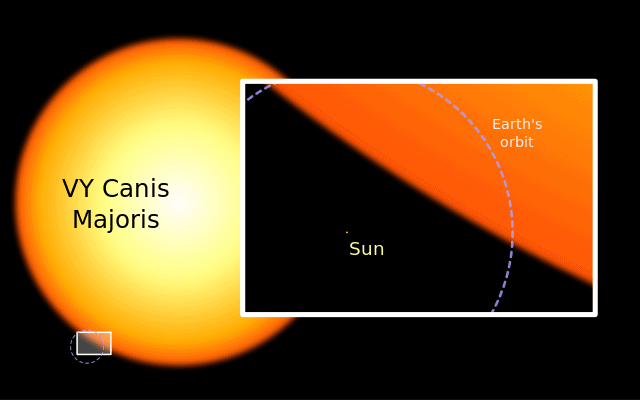
Other Characteristics
VY Canis Majoris is a red supergiant/hypergiant star of spectral type M3-M4.5. It is an extreme oxygen-rich and pulsating variable star. It has an apparent magnitude that varies from 6.5 to - 9.6, and its absolute magnitude is – 9.4.
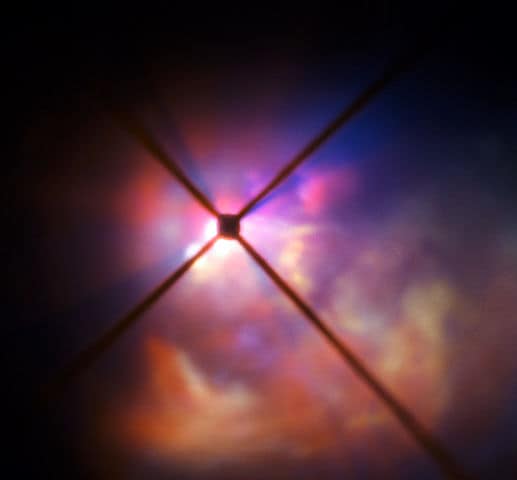
This hypergiant is losing its mass to a rate of around 30 times the mass of Earth every single year. Much of this material has taken the shape of a cloud of dust and gas around the star. It is speculated that the hypergiant has already lost more than half of its mass. The hypergiant is around 270.000 times brighter than our sun.
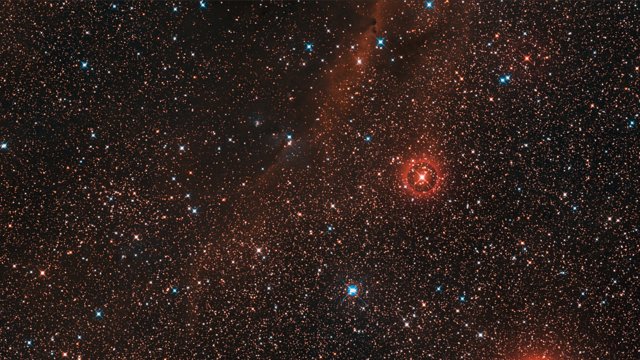
VY Canis Majoris is cooler than our sun, with an estimated surface temperature of around 3.490 K. Our Sun has around 5.778 K surface temperatures for comparison. VY Canis Majoris has a rotational velocity of around 300 km / 186.4 mi per second. VY Canis Majoris has an average density of 5.33 to 8.38 mg/m3, it is over 100.000 times less dense than Earth’s atmosphere at sea level.
Location
VY Canis Majoris is located in the constellation of Canis Major. It is bright enough to be observed with a pair of regular binoculars.
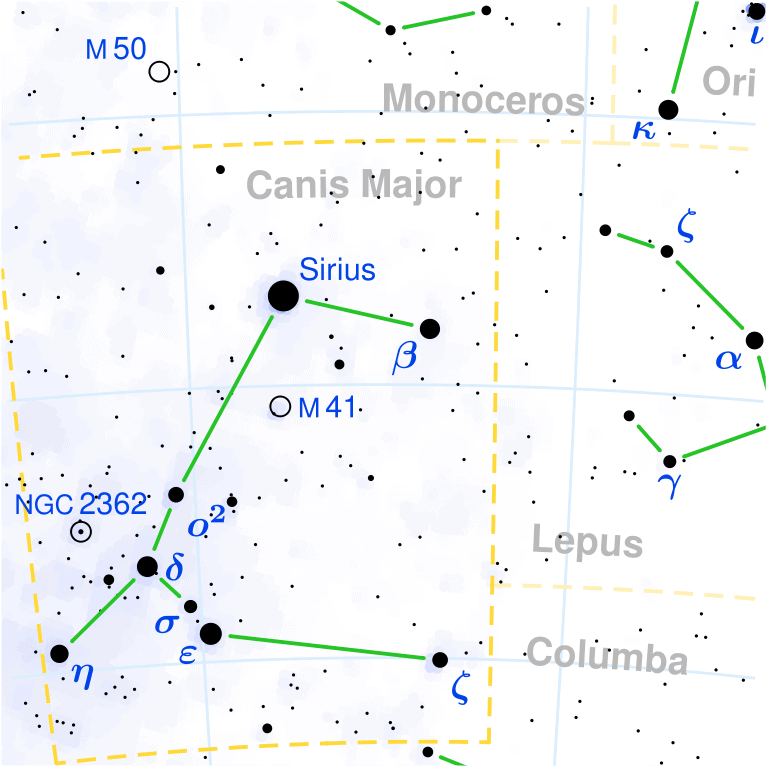
Consecuentely, VY Canis Majoris is the biggest star of the constellation. The Canis Major constellation represents the big hunter dog of Orion, the celestial hunter. It is the home of the brightest star in the night sky, Sirius.
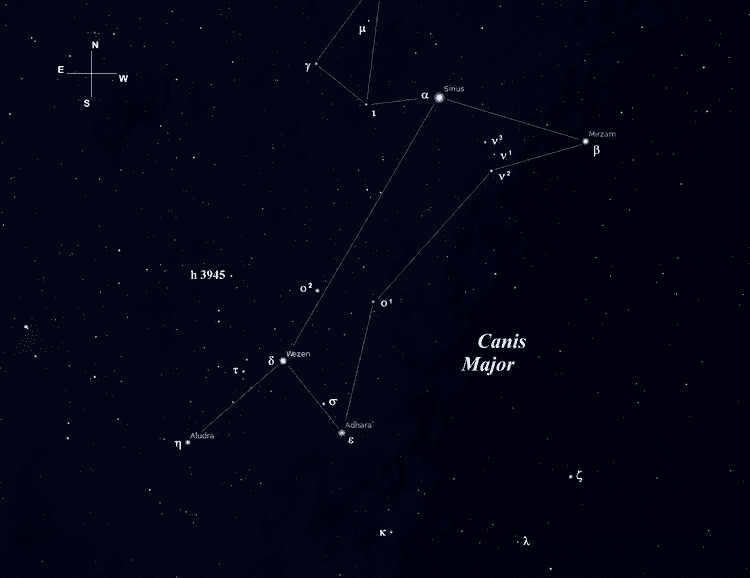
The Future
VY Canis Majoris is big enough to explode as a hypernova or superluminous nova. Hypernovas produce considerably higher amounts of energy than regular supernovas. They also produce long-duration gamma-ray bursts, which are among the most energetic events observed in our universe.
When it will happen, VY Canis Majoris will explode releasing the energy of more than 100 times that of a supernova, and enormous quantities of gamma rays.
This explosion will not affect Earth as the hypergiant is too far away, but if there are any planets near VY Canis Majoris which host life, it would be completely eradicated. The hypernova explosion is estimated to take place in around 100.000 years. After the star explodes, it is speculated that its remaining core will collapse and result in a black hole.
Did you know?
- If VY Canis Majoris would be in the solar system, Earth would be engulfed in the star’s photosphere.
- If a car going with a speed of 120 m.p.h would be on-route towards VY Canis Majoris, it would reach the star in around 10.240.204.155.39 years.
- If the New Horizons Space Proba would travel towards VY Canis Majoris with a speed of 33.000 m.p.h, it would reach the hypergiant in around 37.237.106.02 years. By this time the star woul’ve already exploded into a hypernova.
- If we could fill VY Canis Majoris with Earth’s, we would need around 3 quadrillion 729 trillion Earth’s to match the star’s volume.
- If you would fly around VY Canis Majoris into a passenger airplane traveling at around 559 m.p.h / 900 km an hour, it would take you 1.100 years to complete one circuit.
- VY Canis Majoris’s volume is around 3 billion times bigger than the Sun’s.
Sources:
Image source:
- https://upload.wikimedia.org/wikipedia/commons/b/b1/VY_Canis_Majoris%2C_Rutherford_Observatory%2C_07_September_2014.jpeg
- https://upload.wikimedia.org/wikipedia/commons/thumb/c/cc/Star-sizes.jpg/1024px-Star-sizes.jpg
- https://upload.wikimedia.org/wikipedia/commons/thumb/f/fe/Sun_and_VY_Canis_Majoris.svg/640px-Sun_and_VY_Canis_Majoris.svg.png
- https://upload.wikimedia.org/wikipedia/commons/thumb/9/93/VLT_image_of_the_surroundings_of_VY_Canis_Majoris_seen_with_SPHERE.jpg/517px-VLT_image_of_the_surroundings_of_VY_Canis_Majoris_seen_with_SPHERE.jpg
- http://cdn.eso.org/videos/videoframe/eso1546a.jpg
- https://upload.wikimedia.org/wikipedia/commons/thumb/a/af/Canis_Major_constellation_map.svg/600px-Canis_Major_constellation_map.svg.png
- https://alchetron.com/cdn/canis-major-f3e3eec7-ce47-4e29-bb17-3e6e7c9f71a-resize-750.png
